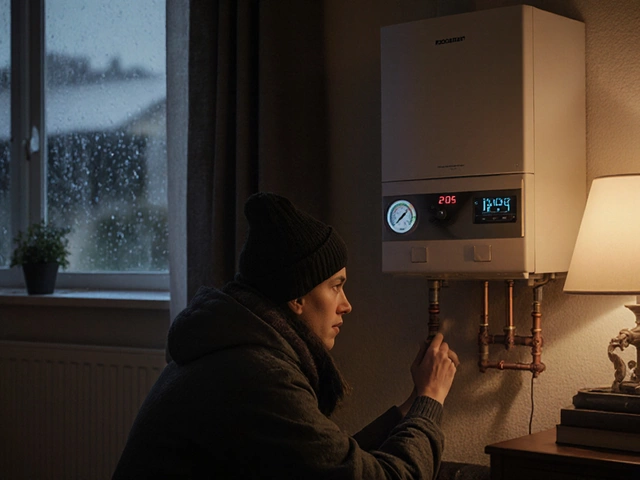Ever tried cooking dinner only to find your gas oven won’t light? Nine times out of ten, a bad igniter is the culprit. If your oven clicks, hisses, or just won’t heat, you might not need a whole new appliance—just a fix for the igniter.
Before you empty your wallet or panic-order takeout, let’s get real about what it usually costs to repair a gas oven igniter. On average, replacing an igniter in 2025 runs between $120 and $300, parts and labor included. That’s a big range, and it really comes down to your oven brand, whether a pro charges a trip fee, and if you want genuine or universal parts.
Most of the money goes toward labor. The igniter itself is usually the cheapest part—often around $30 to $60 for a typical oven. But techs charge for their time, and if your oven is cramped or the job’s tricky, that bumps the price up. Don’t forget, some repair shops tack on a diagnostic fee ($50–$100) just to check things out, but they might waive it if you approve the fix.
If you’re handy with a screwdriver and know how to safely disconnect a gas oven (and you double-check the gas is off!), you could install the part yourself and just pay for the igniter. But if you’re not 100% sure, it’s safer to bring in a pro—nobody wants to mess with gas and risk a leak, right?
- Why Oven Igniters Fail
- Signs Your Igniter Needs Repair
- Repair Cost Breakdown
- DIY vs Professional Help
Why Oven Igniters Fail
If your oven stops heating up the way it should, there’s a good chance it’s because the igniter is worn out. This part is basically what lights your oven’s gas burner. When it fails, you get no flame, and that means no cooking for you.
Here’s what usually knocks out a gas oven igniter:
- Normal wear and tear: Over time, igniters just wear out. Most have a lifespan of 3 to 8 years, depending on how often you bake. The more you use the oven, the sooner it’ll need replacing.
- Electrical surges: If you’ve had power bumps in your house, these little spikes can fry the igniter’s circuitry. It’s common after storms or outages.
- Built-up food spills: Spills and grease can collect around the igniter and cause it to fail. If you’ve ever made pizza straight on the rack, you know what I mean.
- Poor airflow: When oven vents get blocked, the igniter can overheat and die faster.
- Bad installation: Sometimes a new igniter wasn’t installed quite right, which shortens its life.
Want some real-world numbers? Here’s a breakdown from a 2024 appliance service survey of what causes igniter repairs most often:
| Reason for Failure | % of Cases |
|---|---|
| Normal Wear | 55% |
| Electrical Spike | 20% |
| Food/Grease Buildup | 15% |
| Ventilation Issue | 7% |
| Poor Installation | 3% |
Bottom line: Even the best igniter won’t last forever. Routine cleaning and making sure your oven’s vent isn’t blocked can stretch out the life a bit. If you see your oven taking longer to heat, or you hear the click but nothing happens, your gas oven igniter is probably close to calling it quits.
Signs Your Igniter Needs Repair
Your gas oven should fire up quickly and run smoothly. When the gas oven igniter starts going bad, though, it gives you some clear warning signs—if you know what to look for.
- The oven won’t heat at all: This one’s obvious but seriously common. If your oven just sits cold even when it’s set to bake, the igniter could be totally shot.
- Slooooow start: If it takes forever for your oven to light, the igniter is probably worn and isn’t drawing enough power to open the gas valve fast.
- No glowing igniter: Crack open the oven and start it up. You should see a steady orange glow from the igniter. No glow? Time to worry.
- Clicking but no flame: The oven might click or hum but not light. That’s usually because a weak igniter can’t get the job done.
- Gas smell before ignition: If you smell gas for a few seconds before the oven fires, the igniter is taking too long—this isn’t just annoying, it’s risky.
The experts tend to agree. As The Spruce says:
"When an oven igniter glows but fails to light the gas, it's the most common sign that the igniter needs replacing."
For a better feel on why you might need a repair, here’s a quick look at the most reported signs and how often folks run into them, according to an appliance repair survey done last year:
| Problem | Percent of Cases |
|---|---|
| Oven won’t heat | 48% |
| Slow to ignite | 32% |
| No glow from igniter | 14% |
| Gas smell before firing | 6% |
Most of these problems get worse if ignored. If your oven shows any of these signs, don’t keep putting it off. A faulty igniter isn’t just a hassle—it can slowly waste gas and raise your energy bills. Best bet? Catch the warning signs early, and you’ll save yourself money and headaches.

Repair Cost Breakdown
So, what are you really paying for when you fix a gas oven igniter? There are three big pieces: the part itself, labor, and any extra or hidden fees. Let’s break it down so you know what’s fair and what’s a rip-off.
Here’s what you can expect on your bill:
- Igniter part: For most standard ovens, the igniter costs $30 to $60. If you need a name-brand or something harder to find, it might climb to $90 or above.
- Labor: Most repair techs charge by the job, not the hour. The typical labor charge is between $90 and $180 for this fix. It may go up if your oven is built-in or hard to access.
- Service call/diagnostic fee: This usually runs $50 to $100 just for showing up and figuring out what’s wrong. Many times, if you agree to the repair on the spot, this fee gets rolled into the total price.
Add these up, and for most folks, the total repair lands between $120 and $300. High-end or commercial ovens sometimes go higher, especially if the igniter is rare or the job is complicated.
Looking to save some cash? Some folks order the igniter online and call a tech just to swap it in, which sometimes drops the price a bit. But keep in mind, pros usually won’t warranty parts they didn’t supply. Also, watch out for “flat-rate” quotes that seem too good to be true—they often sneak in extra charges once they’re in your kitchen.
If your oven is still under warranty, repairs might be covered free, so always check your paperwork before you pay out of pocket.
DIY vs Professional Help
Thinking about swapping the igniter yourself to save some cash? You’re not alone. Replacing a gas oven igniter is one of those appliance repairs that sits right in the middle: not too complicated, but definitely not risk-free.
If you feel comfortable working around gas, have a decent screwdriver set, and can follow a YouTube video, doing it yourself is possible. Most DIYers report the job takes about 30–60 minutes, start to finish. For most ovens, you’ll just need to:
- Unplug the oven or shut off the breaker
- Turn off the gas supply (super important!)
- Unscrew the oven’s bottom panel
- Remove the old igniter (usually two screws and a wire connector)
- Install the new igniter and reassemble
But here’s the deal—when you’re messing with gas, mistakes aren’t an option. If you’re ever not sure you did something right or it just "feels off," play it safe and call a pro. Some folks skip steps and forget to test for gas leaks, which is dangerous.
So what do pros bring to the table? For starters, they have the right tools for tight/quicky jobs and know exactly how to test for leaks after the repair. They’re fast, usually in and out in under 45 minutes, and most offer a warranty on their work. You’re paying for peace of mind—and that’s not nothing.
Here’s a quick look at the pros and cons of DIY versus hiring a professional:
| DIY Repair | Professional Repair | |
|---|---|---|
| Cost | $30–$100 (just the part) | $120–$300 (includes parts & labor) |
| Time Needed | 30–60 minutes | 30–45 minutes |
| Skill Level | Moderate—need to feel safe around gas line | No skill needed (just make coffee and watch) |
| Warranty | Usually none | Often included |
| Risk | Gas leaks or faulty install | Low—techs test everything |
If your oven is fancy, under warranty, or you just want things fixed right the first time, go pro. But if you love a challenge, follow safety rules, and aren’t afraid to get your hands dirty, DIY can be a solid way to save money.





